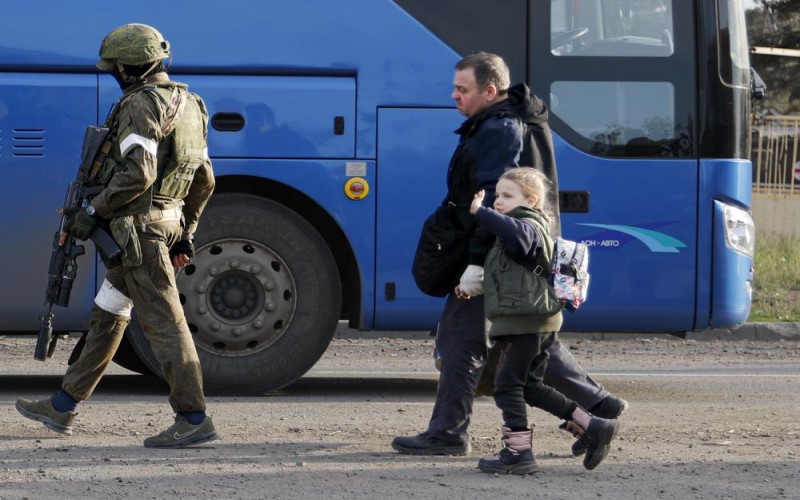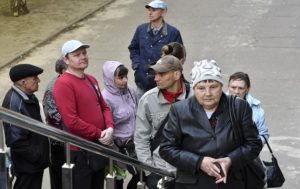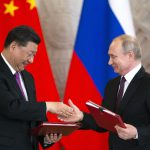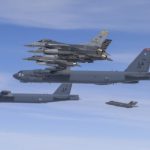
ZAPORIZHZHIA, Ukraine (AP) — Dozens more civilians were rescued Friday from the tunnels under the besieged steel mill where Ukrainian fighters in Mariupol have been making their last stand to prevent Moscow’s complete takeover of the strategically important port city.
Russian and Ukrainian officials said 50 people were evacuated from the Azovstal plant and handed over to representatives of the United Nations and the International Committee of the Red Cross. The Russian military said the group included 11 children.
Russian officials and Ukrainian Deputy Prime Minister Iryna Vereshchuk said evacuation efforts would continue Saturday. The latest evacuees were in addition to roughly 500 other civilians who got out of the plant and city in recent days.
The fight for the last Ukrainian stronghold in a city reduced to ruins by the Russian onslaught appeared increasingly desperate amid growing speculation that President Vladimir Putin wants to finish the battle for Mariupol so he can present a triumph to the Russian people in time for Monday’s Victory Day, the biggest patriotic holiday on the Russian calendar.
As the holiday commemorating the Soviet Union’s World War II victory over Nazi Germany approached, cities across Ukraine prepared for an expected increase in Russian attacks, and officials urged residents to heed air raid warnings.
“These symbolic dates are to the Russian aggressor like red to a bull,” said Ukraine’s first deputy interior minister, Yevhen Yenin. “While the entire civilized world remembers the victims of terrible wars on these days, the Russian Federation wants parades and is preparing to dance over bones in Mariupol.”
By Russia’s most recent estimate, roughly 2,000 Ukrainian fighters are holed up in the vast maze of tunnels and bunkers beneath the Azovstal steelworks, and they have repeatedly refused to surrender. Ukrainian officials said before Friday’s evacuations that a few hundred civilians were also trapped there, and fears for their safety have increased as the battle has grown fiercer in recent days.
Kateryna Prokopenko, whose husband, Denys Prokopenko, commands the Azov Regiment troops inside the plant, issued a desperate plea to also spare the fighters. She said they would be willing to go to a third country to wait out the war but would never surrender to Russia because that would mean “filtration camps, prison, torture and death.”

If nothing is done to save her husband and his men, they will “stand to the end without surrender,” she told The Associated Press on Friday.
Ukrainian President Volodymyr Zelenskyy said “influential states” are involved in efforts to rescue the soldiers, although he did not mention any by name.
“We are also working on diplomatic options to save our troops who are still at Azovstal,” he said in his nightly video address.
U.N. officials have been tight-lipped about the civilian evacuation efforts, but it seemed likely that the latest evacuees would be taken to Zaporizhzhia, a Ukrainian-controlled city about 140 miles (230 kilometers) northwest of Mariupol where others who escaped the port city were brought.
Some of the plant’s previous evacuees spoke to the AP about the horrors of being surrounded by death in the moldy, underground bunker with little food and water, poor medical care and diminishing hope. Some said they felt guilty for leaving others behind.
“People literally rot like our jackets did,” said 31-year-old Serhii Kuzmenko, who fled with his wife, 8-year-old daughter and four others from their bunker, where 30 others were left behind. “They need our help badly. We need to get them out.”
Fighters defending the plant said Friday on the Telegram messaging app that Russian troops had fired on an evacuation vehicle on the plant’s grounds. They said the car was moving toward civilians when it was hit by shelling, and that one soldier was killed and six were wounded.
Moscow did not immediately acknowledge renewed fighting there Friday.
Russia took control of the rest of Mariupol after bombarding it for two months. Ahead of Victory Day, municipal workers and volunteers cleaned up what remains of the city, which had a prewar population of more than 400,000. Perhaps 100,000 civilians remain there with scarce supplies of food, water electricity and heat. Bulldozers scooped up debris, and people swept streets against a backdrop of hollowed-out buildings. Russian flags were hoisted.
The fall of Mariupol would deprive Ukraine of a vital port. It would also allow Russia to establish a land corridor to the Crimean Peninsula, which it seized from Ukraine in 2014, and free some Russian troops to fight elsewhere in the Donbas, the eastern industrial region that the Kremlin says is now its chief objective. Its capture also holds symbolic value since the city has been the scene of some of the worst suffering of the war and a surprisingly fierce resistance.
While they pounded away at the plant, Russian forces struggled to make significant gains elsewhere, 10 weeks into a devastating war that has killed thousands of people, forced millions to flee the country and flattened large swaths of cities.
Ukrainian officials said the risk of massive shelling increased ahead of Victory Day. Kyiv Mayor Vitali Klitschko said authorities would reinforce street patrols in the capital. A curfew was going into effect in Ukraine’s southern Odesa region, which was the target of two missile attacks Friday.
The Ukrainian military’s general staff said Friday that its forces repelled 11 attacks in the Donbas region and destroyed tanks and armored vehicles, further frustrating Putin’s ambitions after his abortive attempt to seize Kyiv. Russia made no acknowledgement of the losses.
The Ukrainian army also said it made progress in the northeastern Kharkiv region, recapturing five villages and part of a sixth. Meanwhile, one person was reported dead and three more were wounded Friday as a result of Russian shelling in Lyman, a city in Ukraine’s eastern Donetsk region.
____
Newsroom | theworldmail.co.uk Source/Contribution/Photo Credit by Associated Press Associated Press journalists from Italy, Ukraine, United States, and AP staff around the world contributed to this report.






